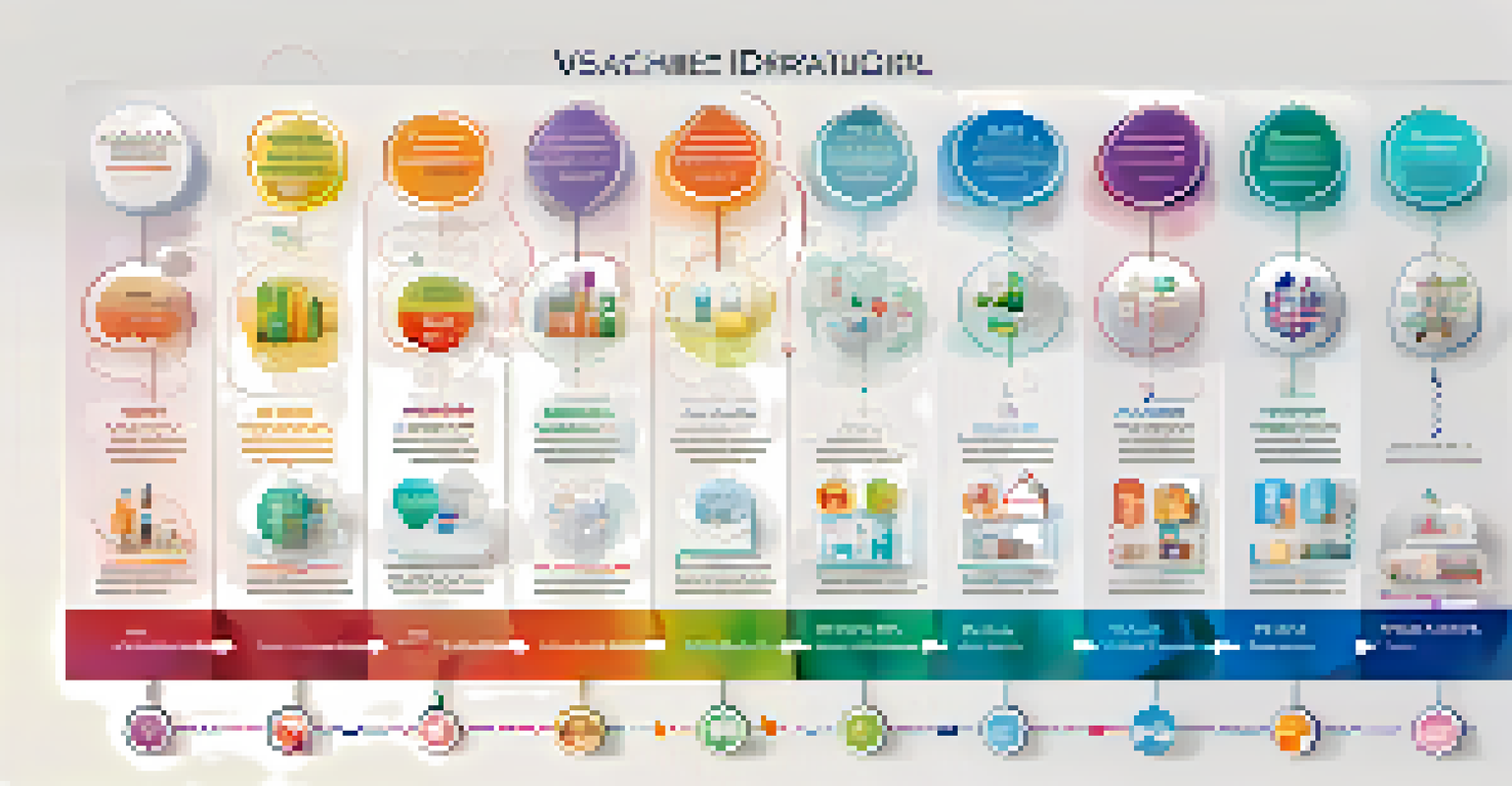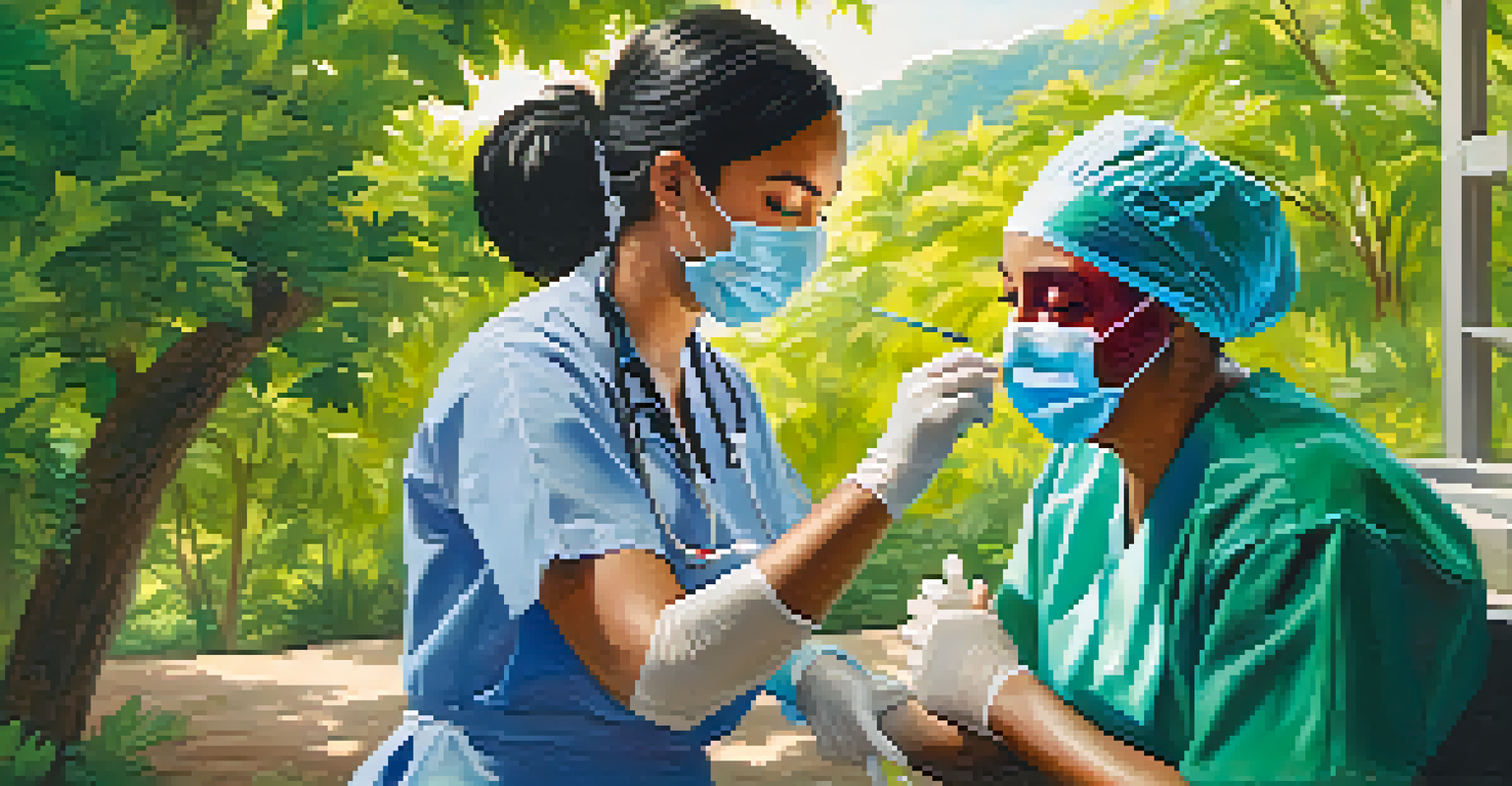From Concept to Clinic: Stages of Vaccine Development Explained

Understanding the Importance of Vaccines
Vaccines play a crucial role in public health by preventing infectious diseases. They stimulate the immune system to recognize and combat pathogens without causing the disease itself. This proactive approach not only protects individuals but also contributes to community immunity, or herd immunity.
Vaccines are the tugboats of preventive health.
Herd immunity is vital because it helps shield those who cannot be vaccinated, such as infants or individuals with certain medical conditions. By understanding how vaccines work and their significance, we can appreciate the meticulous process involved in their development. It’s essential to recognize that this process is not just about science; it’s about safeguarding our communities.
In times of pandemics, such as COVID-19, the urgency for vaccine development becomes even more apparent. The swift and effective rollout of vaccines has highlighted the importance of a robust vaccine development pipeline and its ability to adapt to emerging health threats.
The Initial Research Phase: Discovery and Design
The journey of vaccine development begins with the initial research phase, where scientists explore potential pathogens. This stage involves identifying the virus or bacteria that causes the disease and determining how it affects the body. Researchers also study the immune response to identify targets for the vaccine.

Once a target is established, scientists design the vaccine, which can involve using weakened or inactivated pathogens, subunits, or even genetic material. This stage is highly experimental and requires a great deal of innovation and creativity. It’s akin to piecing together a puzzle where each piece must fit perfectly to trigger an immune response.
Vaccines Protect Public Health
Vaccines not only prevent infectious diseases in individuals but also contribute to community immunity, safeguarding those who cannot be vaccinated.
The initial research phase sets the foundation for successful vaccine development, but it's just the beginning. After designing the vaccine, it needs to undergo rigorous testing to ensure its safety and efficacy, which leads us to the next crucial stage of the process.
Preclinical Trials: Testing in the Lab
Before a vaccine can be tested in humans, it undergoes preclinical trials, typically involving laboratory research and animal studies. This phase helps researchers assess the immune response and identify any potential side effects. It's a critical step to ensure that the vaccine is safe before moving to human trials.
Immunization is a simple, safe and effective way of protecting people against harmful diseases, before they come into contact with them.
During these trials, scientists monitor how the vaccine interacts with the immune system and whether it generates an adequate response. It’s a bit like tuning a musical instrument; researchers adjust the vaccine formulation based on test results to achieve the right balance for an effective immune response.
If preclinical trials yield promising results, the vaccine progresses to clinical trials. This transition is monumental, as it marks the shift from lab experiments to human testing, which brings us to the next significant stage.
Clinical Trials: Ensuring Safety and Efficacy
Clinical trials are conducted in three phases to rigorously evaluate the vaccine's safety and effectiveness in humans. Phase 1 involves a small group of healthy volunteers, primarily focusing on safety and dosage. Researchers monitor for adverse reactions and gauge the immune response.
In Phase 2, the study expands to a larger group, typically consisting of hundreds of participants. This phase assesses the vaccine's efficacy and continues to monitor safety. It’s a critical point where researchers gather more data to see how the vaccine performs in a more diverse population.
Rigorous Testing Ensures Safety
Vaccines undergo a comprehensive testing process through preclinical and clinical trials to ensure their safety and efficacy before public use.
Finally, Phase 3 trials include thousands of participants and are designed to confirm efficacy and identify any rare side effects. This extensive testing is vital to ensure that the vaccine can be safely administered to the general public, paving the way for regulatory approval.
Regulatory Review: Gaining Approval
Once clinical trials are completed successfully, the vaccine developer submits data to regulatory agencies for review. In the U.S., this involves the Food and Drug Administration (FDA), which meticulously examines the trial results to ensure the vaccine meets safety and efficacy standards. This process is essential for public trust.
Regulatory agencies may request additional information or clarification during the review process, ensuring that every aspect of the vaccine is thoroughly vetted. Think of it as a final exam where every detail counts, ensuring that the product is ready for public use.
If approved, the vaccine receives a license for distribution. This approval marks a significant milestone in the journey, but it’s not the end; the focus now shifts to manufacturing and distribution.
Manufacturing: Scaling Up Production
With regulatory approval in hand, the vaccine moves into the manufacturing stage, where production is scaled up to meet public demand. This phase requires precise coordination and quality control to ensure that each dose is produced consistently and safely. It’s akin to preparing a large meal for a banquet; every ingredient must be measured and processed correctly.
Manufacturing facilities must adhere to strict Good Manufacturing Practices (GMP) to ensure the quality and safety of the vaccine. This includes everything from the sourcing of raw materials to the final packaging and labeling. The goal is to maintain high standards throughout the entire production process.
Manufacturing Requires Precision
The manufacturing of vaccines involves strict quality control and coordination to produce safe, effective doses that meet public demand.
Once the vaccine is produced, it’s ready for distribution. However, logistical challenges must be addressed to ensure that it reaches healthcare providers efficiently, leading us to the next vital stage in the vaccine development journey.
Distribution and Administration: Final Steps
The final stage of vaccine development involves distribution and administration to the public, which requires careful planning and coordination. Vaccines must be transported under specific conditions to maintain their efficacy, often requiring refrigeration or freezing. This logistical effort is critical to ensuring the vaccine remains potent until it is administered.
Healthcare providers play a crucial role in this stage, as they are responsible for administering the vaccine to patients. Public health campaigns are often launched alongside this phase to educate communities about the importance of vaccination and address any concerns or misconceptions.

As people receive the vaccine, ongoing monitoring continues to identify any rare side effects or long-term effects. This vigilant oversight helps ensure that the vaccine remains safe and effective, solidifying its role in public health.